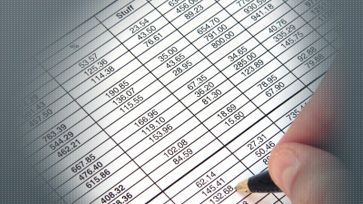FAQs – Haintz Actuarial
What is an actuary?
An actuary is a business professional who deals with the financial impact of risk and uncertainty. Actuaries apply their mathematical expertise, statistical knowledge, economic and financial analysis and problem solving skills to a wide range of practical business problems, helping organisations to understand the long-term financial implications of their decisions.
What are the costs of actuarial services?
HA is happy to work on either a time-cost basis or on an agreed fixed fee for a task. We are conscious of costs, and believe that our fees are very competitive.
What is an actuarial certificate?
An actuarial certificate for a SMSF is a statement by an actuary certifying the proportion of a SMSF’s net income that is exempt from income tax under Section 295-390 of the ITAA 1997, and, in the case of a SMSF providing a defined benefit pension, that the defined benefit pension assets are sufficient to meet the defined benefit pension liabilities.
Why does my fund need an actuarial certificate?
A SMSF that provides a pension (defined benefit pension and/or allocated pension) needs to obtain annually an actuarial certificate to qualify for exemptions from tax. For defined benefit pensions, the certificate must also include a statement by the actuary that the defined benefit pension assets are sufficient to meet the defined benefit pension liabilities.
An account based pension certificate is not required for any year where there were not at least one accumulation balance and at least one pension balance throughout the financial year.
It is a requirement that the tax exemption certificates are obtained prior to submission of the fund’s income tax return.
How do I get an actuarial certificate?
You can get your actuarial certificates online or from HA’s office. You can input data online for an account based pension certificate or complete a data form and email or fax it to us at HA.
Defined benefit certificates can only be obtained by emailing or faxing a data form to HA.
What is an account based pension?
An account based pension is a pension payable annually from a member’s account following retirement or cessation of employment. The minimum amount of the pension is a prescribed (by the ATO) proportion of the pension account balance at the beginning of the financial year; there is no maximum unless the pension is a non-commutable transition to retirement pension, in which case the maximum proportion is 10%.
The minimum pension factors are set out at https://www.ato.gov.au/rates/key-superannuation-rates-and-thresholds/?page=10
What is a defined benefit pension?
A defined benefit pension (sometime referred to a complying pension) is a pension, payable from a SMSF, which must:
(a) be payable for life, or a long term (usually in excess of 15 years);
(b) not have a capital value on the death of the member or at the end of the term;
(c) have regular income payment amounts;
(d) not be commutable to a lump sum;
(e) not be used as security for a borrowing;
(f) have a relevant actuarial certificate.
What is a transition to retirement pension?
A transition to retirement pension is a type of account based pension that allows fund members between the ages of 55 and 64 to access part of their superannuation account balance through a pension while still working, i.e. they can transition more easily from full-time to part-time work.
What is a market linked pension?
A market linked pension (sometimes referred to as a term allocated pension) is a type of account based pension, but it is payable for a fixed term, usually the life expectancy of the pensioner. There are minimum and maximum limits on the amount of pension that can be taken, those limits being according to a formula set out in the Superannuation Industry (Supervision) Regulations 1994, but the limits can be varied by up to 10%.
The minimum and maximum pension factors are set out at https://guides.dss.gov.au/guide-social-security-law/4/9/5/70
What is a defined benefit superannuation fund?
These are superannuation funds where the formula for calculating the retirement benefit (and possibly other benefits also) is specified in terms of years of service with the employer (or years of membership of the fund) and average salary level over the final years prior to retirement; e.g. the member might receive a lump sum of 15% of final average annual salary for each year of membership.
In a defined benefit fund, the member does not carry the investment risk as the member’s benefits do not depend on investment performance. Instead, the contributing employer carries the risk – if investment returns are low, the employer may need to increase their contributions to enable the fund to meet its required payments.
The number of Australian defined benefit funds has been falling over the last ten years and this trend is likely to continue.
A defined benefit superannuation fund is different to a SMSF that provides a defined amount of pension to a member, in that the latter is not provided from a pool of assets (which can be increased by further contributions), but instead from the member’s own pension account – as such the member carries the investment risk.
What is a life interest?
An interest in an asset is an entitlement to the income or capital proceeds of the asset; a life interest is an entitlement to an asset for the term of the beneficiary’s life. For example, a life interest in a property would involve an entitlement to live in a property for life; a life interest in an investment portfolio may involve receipt of income generated by the portfolio for life.
On the death of the life beneficiary, the asset which had been subject to the life interest may be liquidated, and the proceeds distributed to the nominated capital beneficiaries. This interest in an asset is the remainder or residual interest.








